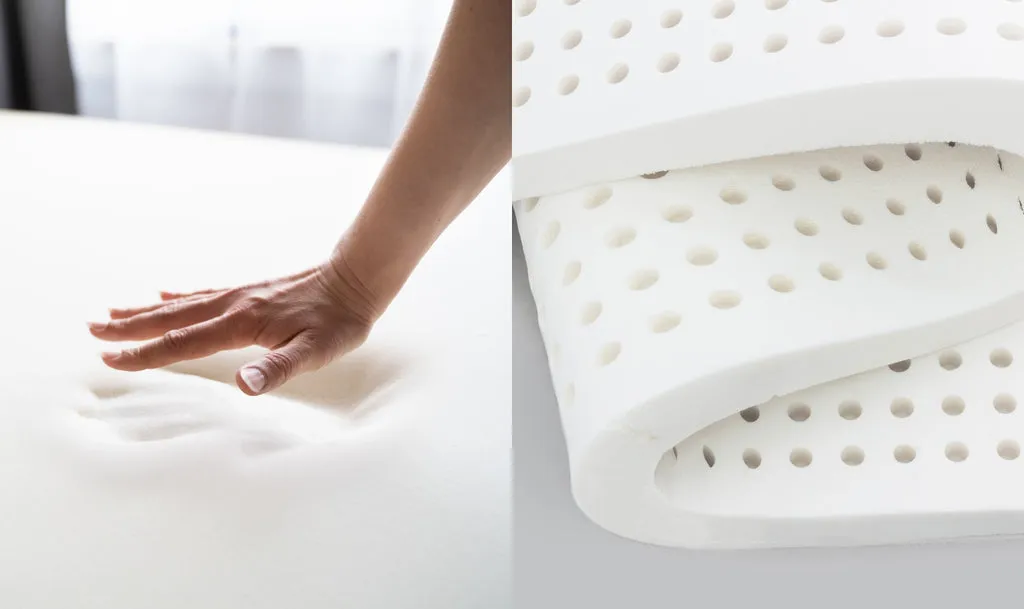
Understanding Different Types of Foam: Unlocking the Secrets of Structure and Function
Foam is an astonishingly versatile material that plays a crucial role in various aspects of our lives, from the plush mattresses we sleep on to the rigged applications in industries such as aerospace and biomedical. Despite its prevalence, foam remains a complex and multifaceted substance, wherein different types exhibit unique characteristics, properties, and applications. This exploration takes us on a journey through the diverse landscape of foam types, dissecting their structures, functions, and significance across multiple contexts.
Foam is a lightweight, porous material created by trapping gas bubbles in a liquid or solid medium. The gas phase often consists of air, carbon dioxide, or other gases, while the liquid or solid phase can include a variety of substances, predominantly polymers. The properties of foam—such as density, resilience, and thermal insulation—are dictated largely by the size and distribution of the gas bubbles, the material utilized, and the manufacturing processes involved.
Understanding foam involves delving deeper into its distinct varieties. This guide will categorize various types of foam, analyze their properties and applications, and highlight the overarching themes that emerge in the foam industry.
Anatomy of Foam: Core Structures and Functions
The Importance of Structure
The internal architecture of foam significantly influences its capabilities and aptitude for varied functions. Here are critical structural characteristics that fundamentally determine foam performance:
- Pore Size: The diameter of gas bubbles plays a pivotal role; smaller pores typically result in denser and more rigid foam.
- Pore Distribution: The arrangement of bubbles impacts foam behavior, affecting how it compresses and recovers.
- Pore Shape and Connectivity: This aspect dictates how foam is influenced by external elements like air, liquids, and applied forces.
Types of Foam: A Detailed Breakdown
1. Open-Cell Foam
Overview: Open-cell foam has interconnected pores that allow air and moisture to pass freely through its structure, lending itself to applications where breathability is paramount.
Characteristics:
– High porosity
– Soft and flexible
– Low density
Applications:
– Soundproofing: Ideal for absorbing sound, making it popular in music studios and theaters.
– Filtration: Frequently utilized in filtration systems for its capacity to entrap particles.
– Cushioning: Common in packaging and furniture to provide a gentle barrier against impact.
2. Closed-Cell Foam
Overview: Closed-cell foam consists of tightly packed bubbles that do not interconnect, leading to a more rigid and denser material.
Characteristics:
– Low porosity and permeability
– High density
– Rigid and inflexible
Applications:
– Thermal Insulation: Widely adopted in construction and refrigeration for its superb insulating properties.
– Flotation Devices: Essential for marine applications where buoyancy is crucial, such as in life jackets.
– Automotive Parts: Provides structural support and vibration dampening in vehicle manufacturing.
3. Reticulated Foam
Overview: This type of foam consists of a vast network of round interconnected pores, leading to a high surface area and superior filtration capabilities.
Characteristics:
– Three-dimensional pore structure
– Highly permeable and low density
Applications:
– Biomedical Devices: Serves as scaffolding in tissue engineering, allowing for vital air and nutrient flow.
– Catalysis: Utilized as a substrate in chemical processes, benefiting from its expansive surface area.
– Filtration Systems: Valuable for air and water purification mechanisms.
4. Microcellular Foam
Overview: This foam type features an extremely small cellular structure, perfect for applications demanding weight reduction.
Characteristics:
– Minuscule pores (micrometers)
– High surface area
Applications:
– Food Packaging: Offers excellent insulation while maintaining low product weights.
– Cosmetics: Commonly found in cosmetic packaging, ensuring lightweight yet protective containment.
– Pharmaceuticals: Useful in drug delivery systems due to its controlled properties.
5. Nanocellular Foam
Overview: At the forefront of foam technology, nanocellular foam has pores at the nanometer scale, boasting revolutionary properties for advanced applications.
Characteristics:
– Nanometer-sized pores
– High surface area and porosity
Applications:
– Energy Storage: Gaining traction in next-generation battery technologies, indicating its potential for lightweight and efficient storage solutions.
– Advanced Materials: Integral in high-performance composites, combining robustness with minimal added weight.
– Biomedical Applications: Sought after for performance-enhancing materials that assist in various drug delivery methods.
The Multifaceted Role of Foam Across Industries
1. Furniture and Bedding
The furniture and bedding industry heavily depends on foam for comfort. High-resiliency foams are sought after for sofas and mattresses to provide enduring support. Innovations such as memory foam and latex foam create unique pressure-relief and temperature-regulating properties, crucial for enhancing the consumer experience. Decorative cushions crafted from foam not only add comfort but also serve aesthetic purposes, improving interior design.
2. Packaging Solutions
In the packaging sector, foams have become invaluable for protecting delicate items during transport. Expanded polystyrene (EPS) is commonly molded into shapes that safeguard electronics, while polyurethane foams afford flexibility for irregular products. Their ability to absorb shocks and create protective layers makes foams the leading option for shipping fragile glassware, high-tech devices, and more.
3. Automotive Applications
In the automotive field, foam helps minimize noise and vibration while maximizing passenger comfort. Used in seating, dashboard cushioning, and interior insulation, specialized automotive foams deliver durability and thermal insulation, creating a quieter cabin experience that enhances user satisfaction.
4. Construction and Insulation
Foam’s importance within the construction sector cannot be overstated, particularly regarding energy efficiency. Closed-cell foam is often applied in walls, roofs, and around pipes for superior thermal insulation. Additionally, its lightweight and adaptable characteristics streamline installation processes, augmenting safety and efficiency in both residential and commercial structures.
5. Health and Wellness
Foam permeates health-related products, from orthopedic-support mattresses to cushioning for medical devices and mobility aids. Specialized foam prioritizes comfort and ergonomic design, promoting healing and wellness through thoughtful manufacturing practices.
Emerging Trends in Foam Technology
1. Sustainability
The growing consciousness surrounding sustainability drives up demand for biodegradable foams and the use of recycled materials. As consumers increasingly favor eco-friendly solutions, innovation in materials science focuses on producing foams that decompose naturally, reducing environmental impact.
2. Customization
With consumer preferences evolving, manufacturers face the challenge and opportunity of creating specialized foam solutions tailored to distinct needs. The trend of custom foam formulations across industries is anticipating enhanced product performance while satisfying varied customer demands.
3. Technological Advancements
Progress in manufacturing processes—particularly in the adoption of 3D printing—opens exciting avenues for foam applications. Tailoring designs with precision enables the creation of specific shapes and structures, thereby extending the functional potential of foam across diverse sectors.
Conclusion: The Unfolding Tapestry of Foam
In the intricate landscape of foam materials, a rich tapestry of innovation, versatility, and application emerges. By deciphering the distinct types of foam and their dynamic functions across various sectors, we gain invaluable insight into their significant impact on daily life. From enhancing comfort in our homes to contributing significantly to advancements in packaging and construction, foam reshapes our interactions with the world.
At Agarwal Polyfoam Private Limited, we continue to embody these principles in our commitment to developing and distributing high-quality foam solutions. Established in 2006, we strive to remain at the forefront of the foam manufacturing industry within Rajasthan, attentively meeting the evolving needs of our customers with every product we deliver.
For inquiries regarding our varied range of foam products, customized manufacturing solutions, or insights into our sustainable practices, you are welcome to reach out to us through:
Email: [email protected]
Phone: +91 99280 29469
Our dedicated team looks forward to assisting you in discovering the ideal foam solutions tailored specifically to your needs, ensuring quality and comfort in every product we provide. Thank you for joining us on this enlightening expedition through the expansive world of foam!


